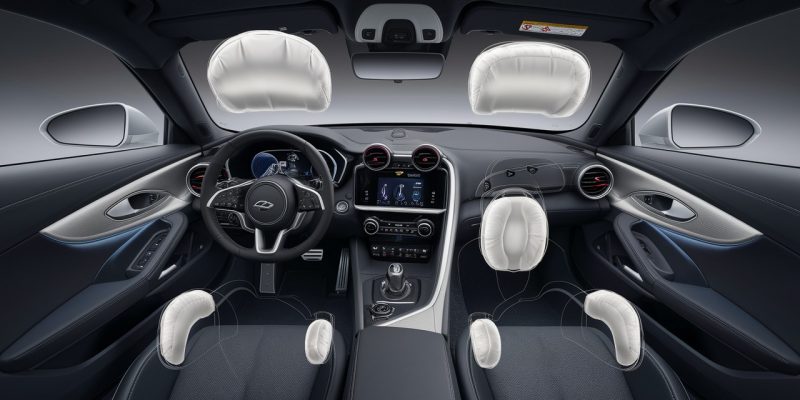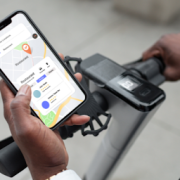In the rapidly evolving world of automotive technology, safety has become a paramount concern. Manufacturers are constantly innovating to make vehicles safer for drivers, passengers, and even pedestrians.
This blog explores the myriad safety features present in today’s automobiles, offering insights into how they work and why they are crucial for modern driving.
Airbags: The Standard Bearer
Airbags have been a standard safety feature for decades, and their DPboss matka technology has significantly improved over time. Modern vehicles come equipped with multiple airbags, including front, side, curtain, and knee airbags.
These deploy in the event of a collision to cushion occupants and reduce the risk of serious injury. Advanced systems now tailor deployment force to the severity of the crash, further enhancing protection.
Anti-lock Braking System (ABS)
ABS is a fundamental safety feature that prevents the wheels from locking up during braking, allowing the driver to maintain steering control.
This is especially useful on slippery surfaces, where it’s easy to lose control. ABS works by rapidly pulsing the brakes, which keeps the wheels rotating and maintains traction.
Electronic Stability Control (ESC)
ESC helps drivers maintain control during extreme steering maneuvers. By automatically applying brakes to individual wheels and reducing engine power, ESC helps prevent skids and rollovers.
This system is particularly beneficial during emergency lane changes or when navigating curves at high speeds.
Traction Control System (TCS)
TCS prevents wheel spin during acceleration by reducing engine power or applying brakes to specific wheels.
This is especially useful in conditions with poor traction, such as rain, snow, or ice. By ensuring that the vehicle’s tires maintain grip, TCS helps drivers maintain control and prevents accidents.
Advanced Driver Assistance Systems (ADAS)
ADAS encompasses a suite of technologies designed to assist the driver in avoiding accidents and making driving easier and safer. Some of the key components include:
- Adaptive Cruise Control (ACC): Maintains a set speed and distance from the vehicle ahead, adjusting speed automatically.
- Lane Departure Warning (LDW) and Lane Keeping Assist (LKA): Alerts the driver if the vehicle drifts out of its lane and can gently steer it back.
- Blind Spot Detection (BSD): Monitors blind spots and warns the driver of approaching vehicles.
- Forward Collision Warning (FCW) and Automatic Emergency Braking (AEB): Warns the driver of an impending collision and can apply brakes automatically if necessary.
- Rear Cross-Traffic Alert (RCTA): Alerts the driver to approaching traffic when reversing out of a parking space.
Rearview Cameras and Parking Sensors
Rearview cameras have become a standard feature in modern vehicles, providing a clear view of what’s behind the car when reversing. Parking sensors,
often used in conjunction with these cameras, alert the driver to obstacles that may not be visible. These features significantly reduce the risk of accidents while parking and maneuvering in tight spaces.
Read Also: The Future of Marketing: Trends to Watch in the Coming Years
Tire Pressure Monitoring System (TPMS)
TPMS alerts the driver when tire pressure is too low, which can lead to poor handling, increased tire wear, and higher fuel consumption.
Maintaining proper tire pressure is essential for safe driving, and TPMS helps ensure that drivers are aware of any issues before they become serious problems.
Automated Emergency Call (eCall)
In the event of a severe accident, the eCall system automatically contacts emergency services and provides them with the vehicle’s location. This can be a lifesaver, especially in situations where the driver is unable to call for help.
Pedestrian Detection and Protection Systems
Pedestrian detection systems use cameras and sensors to identify pedestrians in the vehicle’s path. If a collision is imminent, the system can alert the driver and, if necessary, apply the brakes automatically.
Some advanced systems even raise the hood slightly to reduce the impact force, providing better protection for pedestrians.
Adaptive Headlights
Adaptive headlights enhance visibility by adjusting the direction and range of the headlights based on the vehicle’s speed, steering angle, and elevation. This ensures better illumination of the road ahead, especially around curves and over hills, reducing the risk of accidents caused by poor visibility.
Night Vision Assist
Night vision assist uses infrared cameras to detect objects beyond the reach of standard headlights, such as animals or pedestrians. The system then displays this information on the dashboard, allowing the driver to react in time and avoid potential hazards.
Driver Attention Monitoring
Driver attention monitoring systems track the driver’s behavior to detect signs of drowsiness or distraction. If the system identifies that the driver is not paying adequate attention, it can issue alerts to encourage a break or more focus on the road.
Traffic Sign Recognition
This feature uses cameras to detect and interpret road signs, displaying the information on the dashboard. It helps ensure that drivers are aware of important signs such as speed limits, no-entry signs, and other critical road information, reducing the risk of traffic violations and accidents.
Vehicle-to-Everything (V2X) Communication
V2X communication allows vehicles to communicate with each other and with infrastructure such as traffic lights and road signs. This technology enhances road safety by providing real-time information about road conditions, traffic, and potential hazards, enabling proactive responses to prevent accidents.
Conclusion
The integration of advanced safety features in today’s automobiles has significantly reduced the risk of accidents and enhanced overall road safety.
From basic systems like airbags and ABS to sophisticated technologies such as ADAS and V2X communication, modern vehicles are equipped with an array of tools designed to protect drivers, passengers, and pedestrians.
As automotive technology continues to evolve, we can expect even more innovative safety features to emerge, further improving the safety and reliability of our vehicles.
For drivers, staying informed about these features and understanding how they work is crucial. Not only do these technologies make driving safer, but they also contribute to a more enjoyable and stress-free driving experience.
Investing in a vehicle with advanced safety features is not just about complying with regulations or keeping up with trends; it’s about prioritizing the well-being of everyone on the road.
Whether you’re a seasoned driver or a new one, understanding and utilizing these safety features can make a significant difference in preventing accidents and saving lives.
Read More: Smart Home Gadgets That Will Transform Your Living Space









Comments